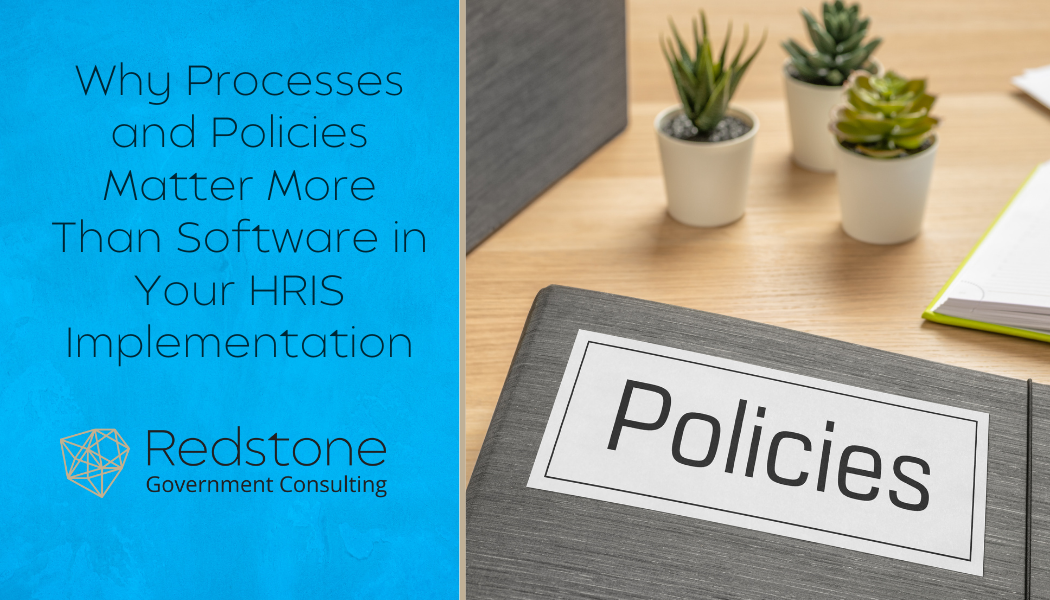A well-configured HR system can feel like the backbone of a thriving organization by streamlining processes, enhancing employee experience, and offering powerful data insights. However, even the most advanced HR technology can quickly become a liability if one critical element is overlooked - compliance. Government contractors risk turning their greatest HR asset into a hidden source of vulnerability if they fail to consider compliance in their implementation strategy.
Topics: Small Business Compliance, Contracts & Subcontracts Administration, DCAA Audit Support, Human Resources, Government Regulations, Office of Federal Contract Compliance Programs, Service Contract Act, Organizational Change Management Consulting, UKG Ready HR Software Consulting
Successful Human Resources Information System (HRIS) implementation isn’t just about choosing the right system; it’s about aligning that system with your internal business processes and formalizing documented policies and procedures. In this article, we explore how clearly defined workflows, roles, and written policies are essential to getting the full value from platforms like UKG Ready, especially for government contractors where compliance is non-negotiable.
Topics: DCAA Audit Support, Human Resources, Office of Federal Contract Compliance Programs, Service Contract Act, UKG Ready HR Software Consulting
While selecting the right HRIS system is a major process in itself, configuring it is a whole other piece of the puzzle. From the recruitment-to-hire process to timekeeping and payroll, it’s essential to set up the system optimally from the start to support compliance and ensure the most success as your business grows. When you add in the government contract compliance piece, the “puzzle” is even further complicated.
Topics: DCAA Audit Support, Human Resources, Office of Federal Contract Compliance Programs, Service Contract Act, UKG Ready HR Software Consulting
Accurate timekeeping is important to most businesses, but for federal government contractors, it is crucial to compliance and continued success. While timekeeping may seem like a straightforward and simple task, it can be daunting for those responsible for developing and implementing appropriate processes, systems, and audit trails. Improper procedures can quickly lead to reporting inaccuracies and audit nightmares! A well-designed process, accompanied by an accurately designed system and a well-documented and communicated policy, is critical.
Topics: DCAA Audit Support, Human Resources, Office of Federal Contract Compliance Programs, Service Contract Act, UKG Ready HR Software Consulting
Late yesterday, President Trump signed another Executive Order related to employment laws. This Executive Order (“Restoring Equality of Opportunity and Meritocracy”) takes aim at the use of “disparate impact liability,” which, the EO proclaims, “undermines our national values [and] also runs contrary to equal protection under the law and, therefore, violates our Constitution.”
Topics: Litigation Consulting Support, Human Resources, Government Regulations, Office of Federal Contract Compliance Programs, Service Contract Act
Executive Order 14173, Ending Illegal Discrimination and Restoring Merit-Based Opportunity, has left many unsure as to what you can, cannot, should, or should not do. You are not alone! There are many unanswered questions, so we do not and could not claim to have all the answers, but we do have some thoughts and suggestions to consider at this stage.
Topics: Contracts & Subcontracts Administration, Human Resources, Government Regulations, Office of Federal Contract Compliance Programs, Federal Acquisition Regulation (FAR)
Managing HR functions while ensuring compliance can be challenging, especially during busy times of the year. Between tracking accruals, managing time records, verifying new hire documentation, and ensuring HR systems function correctly, small inefficiencies can quickly add up. Addressing these issues early allows organizations to maintain accurate records, generate reliable reports, and streamline compliance processes, reducing stress during critical reporting periods.
Topics: DCAA Audit Support, Human Resources, Office of Federal Contract Compliance Programs, Service Contract Act, UKG Ready HR Software Consulting
President Trump took aim at more than just DEI programs in Executive Order 14173 signed on January 21, 2025, "Ending Illegal Discrimination and Restoring Merit-Based Opportunity," in which he ordered the revocation of several executive actions, including EO 11246.
Topics: Human Resources, Government Regulations, Office of Federal Contract Compliance Programs
As a government contractor, ensuring compliance with employment law regulations is not only a legal requirement but also a crucial element in protecting your business from significant financial and legal risks. While employment law compliance might seem straightforward, the complexities of frequent updates and variations across jurisdictions make it a challenging task to manage. In this post, we’ll explore why employment law compliance is vital, the risks of non-compliance, and how you can protect your business with a comprehensive solution.
Topics: Human Resources, Government Regulations, Office of Federal Contract Compliance Programs
It is no secret that money plays a significant role in attracting, motivating, and retaining employees; however, recent studies and our experience show that a holistic approach to total compensation is key to success in today’s market. A 2016 study by the Society for Human Resources Management (SHRM) found that pay was the second most important factor of job satisfaction. Many employers focus on the numbers behind the dollar sign, but total compensation goes beyond the paycheck. Total compensation, as defined by Indeed, refers to the total value an organization offers an employee in exchange for their work, including their salary and any benefits or incentives. In addition to these elements, intangible factors like company culture, engagement, wellness, development, and recognition should also be considered as features of total compensation.
Topics: Employee & Contractor Compensation, Human Resources, Office of Federal Contract Compliance Programs










